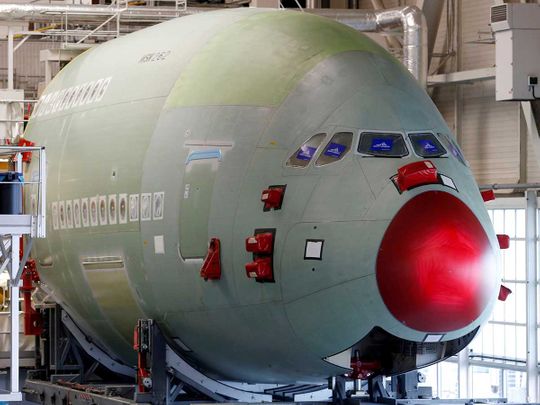No short routes to get travellers back on flights, says Airbus chief

Dubai: With flights all set to resume in coming days, it’s for airports, airlines and aircraft manufacturers to ensure that only those passengers who are not infected get on board.
“This is a global responsibility,” said Mikail Houari, President for Airbus’ Africa and Middle East operations. “If the passenger wants to be guaranteed he won’t get infected on a plane, the airport and airline should ensure no one infected steps into the cabin.
“Whether it’s passengers flying onboard our aircraft, or those taking control of an A380, or those providing maintenance and repair services to our fleet on the ground, we are always applying end-to-end layers of safety at every step.”
The need of the moment is to focus on an “end-to-end passenger experience”, not only during the flights but also by practising social distancing at airports, screening and managing travellers before they board, and disinfecting cabins.
However, the key is to ensure consistency and strict enforcement of these precautionary measures.
Airlines have provided schedules for the relaunch of services, with many focused on domestic flights and then widening that to international networks. Many of these carries are in the midst of negotiations with national governments for aid that could keep them afloat until normal traffic levels return to the skies.
But it won’t happen overnight
Houari reckons that air traffic demand will return to 2019 levels only by 2023-24.
“We had cases in the past where our industry suffered a lot - 9/11, SARS, MERS, etc,” he added. “However, what we are experiencing is an accumulation of all three crises. We owe it to the world to restore trade flows and passenger journeys that bring economic prosperity.”
A three-pronged strategy
To reassure passengers and restore trust in air travel, Airbus is putting in a series of measures for end-to-end safety during the actual journey.
A three-pronged strategy will look at constant circulation of cabin air on board the aircraft - it will flow from the top at one meter per second and is then removed through the floor.
The recirculated air will pass through high-efficiency HEPA filters which remove more than 99.97 percent of particles, including those potentially containing the COVID-19 virus.
This cycle continues throughout the flight as air is fully exchanged, filtered and renewed about every three minutes.
“Air supplied to the cabin is clean and hospital-like during flight,” the official said. “In fact, the air during flight is often cleaner than when the doors were closed before takeoff.
“This kind of filtration does not happen on any mode of transport. These three factors make air inside the cabin extremely safe. Cabin air cleanliness was not discussed earlier, but strict measures have always been in place.”
Going for short-hauls
Houari expects short-to medium-term demand to be for single-aisle aircraft. As for wide-bodied aircraft, “borders need to reopen extensively for long-haul travel to be restored to pre-crisis levels.”
An IATA survey in April found that 58 per cent are somewhat or very likely to restrict their initial travel to domestic journeys. Domestic revenue passenger kilometres (RPK, an airline industry metric) will only recover to 2019 levels by 2022. International RPKs are only expected to return to 2019 levels in 2024, according to the findings.
To fill or not
Most airlines have said the idea of removing the middle seat to minimise the risk of on-board transmission is untenable. Airbus has not received any requests from airlines for cabin reconfiguration as yet, the official said.
“The aircraft seating configuration is the airline’s choice entirely. Airlines have always decided how they want to organise their cabins. Whether they want only economy, business, flat seat, big suite, etc., this is the airline’s prerogative.”
Supply chain
Although two-thirds of global aircraft are grounded globally, the one-third which is flying are mainly for cargo. This could be a good source of revenue for airlines faced with significant declines in passenger volumes.
The executive said the plane-maker is in constant dialogue with suppliers to manage the situation. In April, Airbus had 14 deliveries to nine customers (versus 70 deliveries over the same period in 2019). These included 12 A320neos. Since January, Airbus made 136 deliveries to 51 customers (vs 232 deliveries over the same period in 2019). The manufacturer said it had 7,645 aircraft in its order backlog at the end of April.
“A large number of Airbus key sourcing countries are offering state support to their resident suppliers. We are supporting our suppliers by orienting them towards these solutions,” Houari said.


Comments